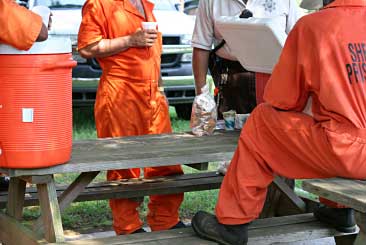|
|
| H1N1 Virus (Pandemic) Planning: Play It Safe-Over-Plan |
| By William Sturgeon |
| Published: 09/28/2009 |
 There has been a great deal written about the H1N1 virus (aka Swine Flu). There are articles spanning the medical gamut from who should be immunized to when schools should be closed. Everything that I have read has beeninsightful and useful. I will incorporate much of the information that gleaned from my research into this article. This article is being written as a WARNING for correctional facilities and/or places where people live in close contact with each other (juvenile facilities, college dormitories.) H1N1 virus may, like the Y2K alarm, turn out to be a big bust, or it may turn out to be the most significant medical event in recent memory. It is better to be prepared than to be caught unprepared.
There has been a great deal written about the H1N1 virus (aka Swine Flu). There are articles spanning the medical gamut from who should be immunized to when schools should be closed. Everything that I have read has beeninsightful and useful. I will incorporate much of the information that gleaned from my research into this article. This article is being written as a WARNING for correctional facilities and/or places where people live in close contact with each other (juvenile facilities, college dormitories.) H1N1 virus may, like the Y2K alarm, turn out to be a big bust, or it may turn out to be the most significant medical event in recent memory. It is better to be prepared than to be caught unprepared.
I am sure that every correctional facility/agency has, as part of its Emergency / Contingency Plan, a section dealing with medical emergencies, to include contagious diseases and pandemics. What I want to insure is that the facilities’ current plans for pandemics fully anticipate the enormous impact that a lengthy flu pandemic could have on a correctional agency. This article will address focus on operational issues involving STAFF andthe OFFENDERS, - should there be a pandemic. What most concerns me are the unknown dynamics of how quickly a possible pandemic can appear and spread. Who will actually be affected by the disease and how will the disease manifest itself in a closed correctional environment? If the H1N1 Virus comes on slowly and spreads slowly, that will dictate one way to manage its effects on the operations of correctional facilities. If it comes on rapidly and spreads rapidly, that will dictate another way to manage its effects. Regardless of how fast or slow the pandemic hits, it will certainly have animpact on the staffing of correctional facilities and the care of the offenders. This care is the responsibility of the correctional agency. Where I feel most Correctional Emergency / Contingency Planners might have a tendency to “under-plan” is in the area of staffing. I worry that the planners will not take into account the overall effects on staffing and offender care. This could happen for several reasons:
The staffing of correctional facilities will prove to be very demanding should there be a pandemic outbreak. Historically, correctional events are relatively short in duration. Should the H1N1 pandemic strike, it will evolve over an extended period. Therefore, one staffing schedule will not suffice. In my opinion, there has to be a series of staffing schedules. These staffing schedules must also take into consideration “real life” conditions. Staffing schedules should be based upon the following factors:
If the H1N1 virus infects a large number of the offender population, most correctional facilities will need help from external healthcare groups and agencies. Too often, correctional planners make assumptions that the agency/ facility will have sufficient staff in their ancillary departments(medical, food service, maintenance, etc.) to manage their areas. In the case of a pandemic, all of these departments will also be operating withreduced staff due to the flu. Real World Above we have discussed the plan for staffing should the H1N1 virus strike a correctional facility. What we will discuss in this section are the “RealWorld” issues involving staff and offenders. Correctional personnel have risen to every challenge that has come their way. The H1N1 virus, however, is not the normal correctional problem. It is not a riot, major disturbance, offender food strike, etc. The H1N1 virus is an illness that could have deadly consequences depending on individual circumstances. There has been a great deal written by the medical people about the H1N1 virus, yet there still are many unknowns. A crucial unknown is how the H1N1 will manifest itself in a correctional (closed/confined) environment. If large numbers of offenders get seriously ill, this could affect the workforce in a variety of ways:
To what extent the H1N1 virus will affect the world is, as of now, an unknown. As for the correctional community, the H1N1 virus may be theultimate test of an agency’s pandemic plan. It is reasonable to expect that correctional personnel will be asked to perform duties outside of the normal job requirements. Depending on how hard the H1N1 virus strikes, a facility will determine how the Emergency/Contingency Plans work. Just remember that the “Old Man – Me” has always believed that it is better to over-plan than to under-plan. While there may be many model plans floating around on the Internet, I believe that each facility must develop its own plan. General plans do not take into account the “specifics” of each facility, its staffing, and the potential acuity levels of its offender population. It is crucial that correctional administrators and correctional medical personnel keep abreast of how the H1N1 virus manifest itself through the country. Good luck and make sure that you get your flu shots. Visit the Bill Sturgeon page |
MARKETPLACE search vendors | advanced search

IN CASE YOU MISSED IT
|


Comments:
No comments have been posted for this article.
Login to let us know what you think